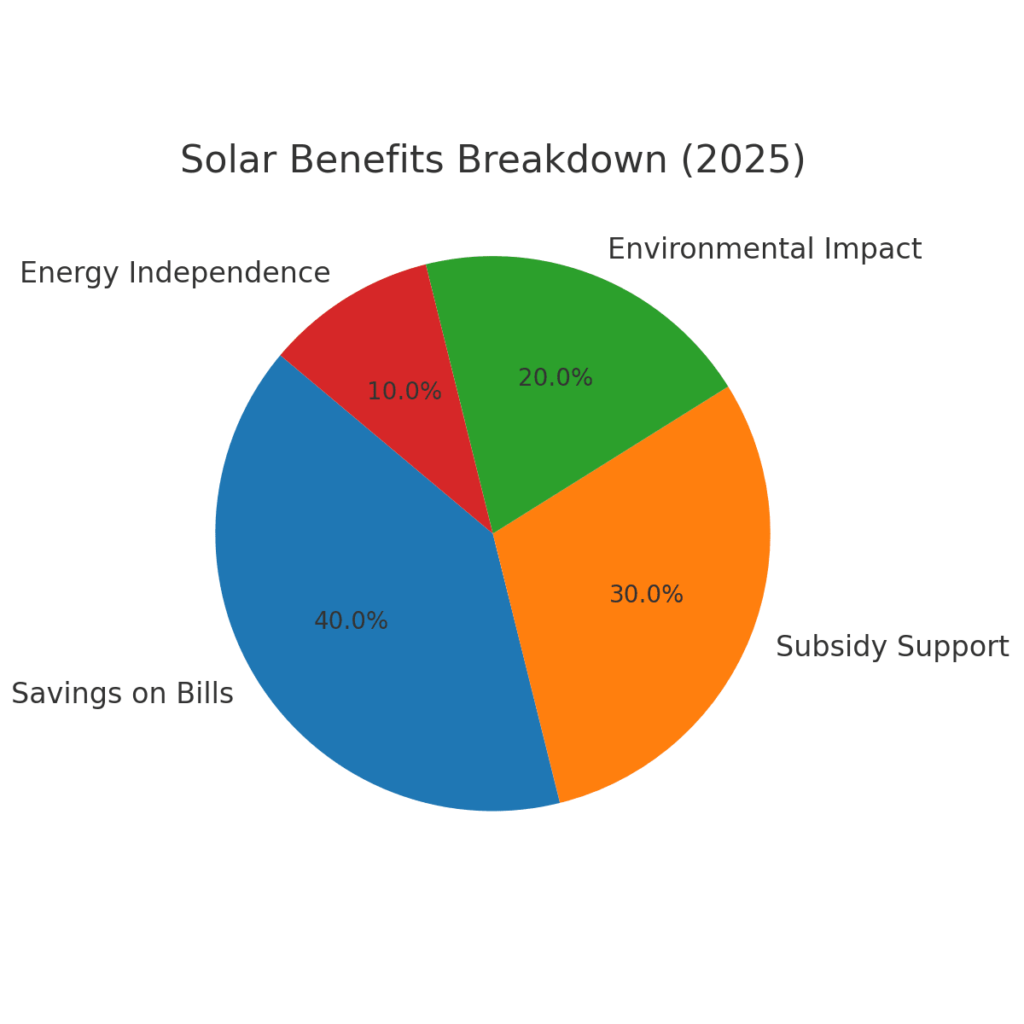Solar subsidies in India are set to undergo major updates in 2025, bringing new opportunities for households, farmers, and businesses to adopt clean energy. India has been at the forefront of the renewable energy revolution, with solar power emerging as one of the most promising sources of sustainable energy. As we enter 2025, the government is introducing fresh policies and reforms to accelerate solar adoption nationwide. These initiatives aim to make solar installations more affordable, efficient, and accessible to all sectors.

The Current Landscape of Solar Subsidies
Over the past decade, the Indian government has rolled out multiple subsidy programs under the Ministry of New and Renewable Energy (MNRE). These subsidies have mainly targeted residential rooftop solar projects, aiming to lower upfront installation costs and make solar energy affordable for households. In 2025, the focus continues to be on expanding these benefits, but with added emphasis on community-based solar projects, agricultural usage, and small businesses.
The government is expected to simplify application procedures for availing solar subsidies through digital platforms, making the process more transparent and user-friendly. Additionally, real-time tracking of subsidy approvals and payments will help reduce delays that previously discouraged many consumers.
Rooftop Solar Subsidies in 2025
Residential users will continue to enjoy significant benefits under the revamped rooftop solar program. Subsidies are likely to cover up to 40% of the benchmark cost for small rooftop systems up to 3 kW and a slightly reduced percentage for larger systems. By reducing initial investment costs, these solar subsidies ensure that more middle-class households can participate in India’s green energy mission.
A major policy shift in 2025 includes incentives for apartment complexes and housing societies that adopt collective rooftop solar solutions. This move not only supports urban sustainability but also allows shared benefits among residents who may not have adequate rooftop space individually.
Solar Subsidies for Farmers
Agriculture is a sector with immense potential for solar adoption, and the government is boosting efforts through schemes such as the Pradhan Mantri Kisan Urja Suraksha Evam Utthaan Mahabhiyan (PM-KUSUM). In 2025, farmers can expect expanded financial support to install solar pumps, solar-powered irrigation systems, and even small-scale solar plants on unused farmland. These solar subsidies are designed to reduce dependence on diesel generators and conventional electricity, while also providing farmers with an additional source of income by selling excess power to the grid.
Industrial and Commercial Incentives
While residential and agricultural users are the prime beneficiaries of subsidies, the industrial and commercial sectors are also set to gain from favorable policies in 2025. Instead of direct solar subsidies, businesses will receive benefits through accelerated depreciation, tax rebates, and concessional loans for solar adoption. These measures will reduce payback periods and encourage industries to invest in solar technology, thereby reducing carbon footprints and energy costs simultaneously.
New Digital and Policy Reforms
A key highlight of 2025 is the integration of digital technologies in subsidy disbursement. The government is introducing a centralized online portal for all solar-related applications, where consumers can apply, monitor, and receive their solar subsidies seamlessly. Blockchain-based systems may also be explored to ensure transparency and eliminate middlemen.
Moreover, policies are being aligned with India’s climate goals, particularly the target of achieving 500 GW of renewable energy capacity by 2030. By strengthening subsidy structures, the government ensures that solar continues to be a vital contributor toward this ambitious goal.
Challenges and the Road Ahead
Despite the positive outlook, challenges remain. Awareness about solar subsidies is still limited in rural areas, where they could have the greatest impact. High upfront costs, even after subsidies, continue to be a concern for some consumers. Furthermore, proper monitoring and quality control of subsidized projects will be crucial in ensuring long-term success.
Looking forward, India’s renewable energy future will heavily depend on the effectiveness of these upcoming policies and the efficient implementation of subsidy programs. The year 2025 is expected to be transformative, as subsidies become more inclusive, digitalized, and result-oriented.
Conclusion
The Indian government’s upcoming policies and subsidy programs in 2025 highlight a strong commitment to scaling up solar adoption across all sectors. From households to farmers and businesses, the benefits of solar subsidies are being extended to make solar energy more affordable and accessible. With streamlined processes, digital reforms, and targeted incentives, India is set to witness a significant boost in solar installations. As these initiatives take effect, solar energy will not only power homes and businesses but also drive the country closer to its renewable energy ambitions, cementing its position as a global leader in clean energy transformation.
